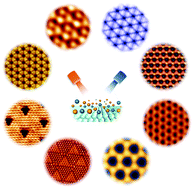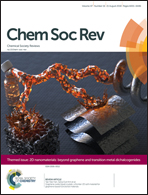Epitaxial growth and physical properties of 2D materials beyond graphene: from monatomic materials to binary compounds
Abstract
The discovery of graphene opened a door for manufacturing and investigating two-dimensional (2D) materials. After more than ten years of development, 2D materials have become one of the most important topics in materials research, with dozens of new materials having been synthesized experimentally and even more predicted theoretically. In this review, we provide a comprehensive overview of the fabrication of 2D materials based on epitaxial growth in an ultra-high vacuum (UHV) experimental environment and the investigation of their physical and chemical properties. In particular, we focus on techniques like intercalation, templated molecular adsorption, and direct selenization and tellurization of metal substrates. We discuss progress in fabrication methods of monatomic and binary 2D materials and highlight their interesting and quite unusual physical properties. Finally, we assess future directions of research in this field, where breakthroughs can be expected, and indicate where investments in additional research might be most rewarding scientifically.

- This article is part of the themed collection: 2D nanomaterials: beyond graphene and transition metal dichalcogenides


 Please wait while we load your content...
Please wait while we load your content...